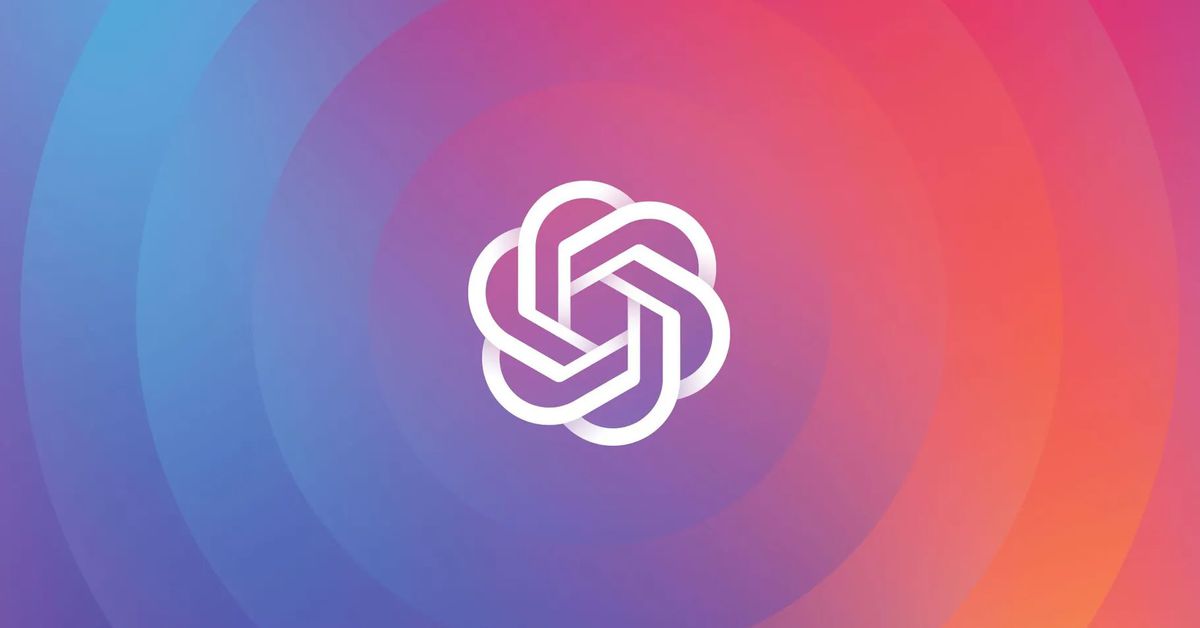OpenAI has publicly responded to a copyright lawsuit by The New York Times, calling the case “without merit” and saying it still hoped for a partnership with the media outlet.
In a blog post, OpenAI said the Times “is not telling the full story.” It took particular issue with claims that its ChatGPT AI tool reproduced Times stories verbatim, arguing that the Times had manipulated prompts to include regurgitated excerpts of articles. “Even when using such prompts, our models don’t typically behave the way The New York Times insinuates, which suggests they either instructed the model to regurgitate or cherry-picked their examples from many attempts,” OpenAI said.
OpenAI claims it’s attempted to reduce regurgitation from its large language models and that the Times refused to share examples of this reproduction before filing the lawsuit. It said the verbatim examples “appear to be from year-old articles that have proliferated on multiple third-party websites.” The company did admit that it took down a ChatGPT feature, called Browse, that unintentionally reproduced content.



I’ve seen and heard your argument made before, not just for LLM’s but also for text-to-image programs. My counterpoint is that humans learn in a very similar way to these programs, by taking stuff we’ve seen/read and developing a certain style inspired by those things. They also don’t just recite texts from memory, instead creating new ones based on probabilities of certain words and phrases occuring in the parts of their training data related to the prompt. In a way too simplified but accurate enough comparison, saying these programs violate copyright law is like saying every cosmic horror writer is plagiarising Lovecraft, or that every surrealist painter is copying Dali.
Machines aren’t people and it’s fine and reasonable to have different standards for each.
But is it reasonable to have different standards for someone creating a picture with a paintbrush as opposed to someone creating the same picture with a machine learning model?
Yes, given that one is creating art and the other is typing words into the plagiarism machine.
This is called assuming the consequent. Either you’re not trying to make a persuasive argument or you’re doing it very, very badly.
deleted
Well, machine learning algorithms do learn, it’s not just copy paste and a thesaurus. It’s not exactly the same as people, but arguing that it’s entirely different is also wrong.
It isn’t a big database full of copy written text.
The argument is that it’s not wrong to look at data that was made publicly available when you’re not making a copy of the data.
It’s not copyright infringement to navigate to a webpage in your browser, even though that makes your computer download it, process all of the contents of the page, render the content to the screen and hold onto that download for a finite but indefinite period of time, while you perform whatever operations you like on the downloaded data.
You can even take notes on the data and keep those indefinitely, including using that derivative information to create your own similar works.
The NYT explicitly publishes articles in a format designed to be downloaded, processed and have information extracted from that download by a computer program, and then to have that processed information presented to a human. They just didn’t expect that the processing would end up looking like this.
The argument doesn’t require that we accept that a human and a computers system for learning be held to the same standard, or that we can’t differentiate between the two, it hinges on the claim that this is just an extension of what we already find it reasonable for a computer to do.
We could certainly hold that generative AI is a different and new category for copyright law, but that’s very different from saying that their actions are unacceptable under current law.
deleted
Have you deleted and reposted this comment three times now, or is something deeply wrong with your client?
deleted by creator
Have you deleted your comment twice now for some reason?
deleted
I don’t think it’s a question of saying they’re “asking for it”, that just feels like trying to attach an emotionally charged crime to a civil copyright question.
The technology was designed to transmit the data to a computer for ephemeral processing, and that’s how it’s being used.
It was intended to be used for human consumption, but their intent has little to do with if what was done was it was fair.
If you give something away with the hopes people will pay for more, and instead people take what you gave them under the exact terms you specified, it’s not fair to sue them.
The NYT is perfectly content to have their content used for algorithmic consumption in other cases where people want a consistently formatted, grammatically correct source of information about current events.
The question of if it’s okay or not is one that society is still working out. Personally, I don’t see a problem with it. If it’s available to anyone, they can do what they want with it. If you want to control access to it, you need to actually do that by putting up a login or in some way getting people to agree to those stipulations.
I’m sorry some of my words were too big for you.
deleted
deleted
Lemmy users in general loves to steal IP, no shock this post didn’t get the love it deserved
Username checks out, sorta.
It doesn’t work that way. Copyright law does not concern itself with learning. There are 2 things which allow learning.
For one, no one can own facts and ideas. You can write your own history book, taking facts (but not copying text) from other history books. Eventually, that’s the only way history books get written (by taking facts from previous writings). Or you can take the idea of a superhero and make your own, which is obviously where virtually all of them come from.
Second, you are generally allowed to make copies for your personal use. For example, you may copy audio files so that you have a copy on each of your devices. Or to tie in with the previous examples: You can (usually) make copies for use as reference, for historical facts or as a help in drawing your own superhero.
In the main, these lawsuits won’t go anywhere. I don’t want to guarantee that none of the relative side issues will be found to have merit, but basically this is all nonsense.
Generally you’re correct, but copyright law does concern itself with learning. Fair use exemptions require consideration of the purpose character of use, explicitly mentioning nonprofit educational purposes. It also mentions the effect on the potential market for the original work. (There are other factors required but they’re less relevant here.)
So yeah, tracing a comic book to learn drawing is totally fine, as long as that’s what you’re doing it for. Tracing a comic to reproduce and sell is totally not fine, and that’s basically what OpenAI is doing here: slurping up whole works to improve their saleable product, which can generate new works to compete with the originals.
What about the case where you’re tracing a comic to learn how to draw with the intent of using the new skills to compete with who you learned from?
Point of the question being, they’re not processing the images to make exact duplicates like tracing would.
It’s significantly closer to copying a style, which you can’t own.
Still a copyright violation, especially if you make it publicly available and claim the work as your own for commercial purposes. At the very minimum, tracing without fully attributing the original work is considered to be in poor enough taste that most art sites will permaban you for doing it, no questions asked.
In the analogy being developed though, they’re not making it available.
The initial argument was that tracing something to practice and learn was fine.
Which is why I said, what if you trace to practice, and then draw something independent to try to compete?
To remove the analogy: most generative AI systems don’t actually directly reproduce works unless you jump through some very specific and questionable hoops. (If and when they do, that’s a problem and needs to not happen).
A lot of the copyright arguments boil down to “it’s wrong for you to look at this picture for the wrong reasons”, or to wanting to build a protectionist system for creators.
It’s totally legit to want to build a protectionist system, but it feels disingenuous to argue that our current system restricts how freely distributed content is used beyond restrictions on making copies or redistribution.
I meant “learning” in the strict sense, not institutional education.
I think you are simply mistaken about what AI is typically doing. You can test your “tracing” analogy by making an image with Stable Diffusion. It’s trained only on images from the public internet, so if the generated image is similar to one in the training data, then a reverse image search should turn it up.
It doesn’t matter how it “”learns””